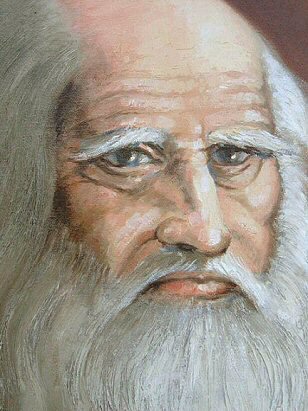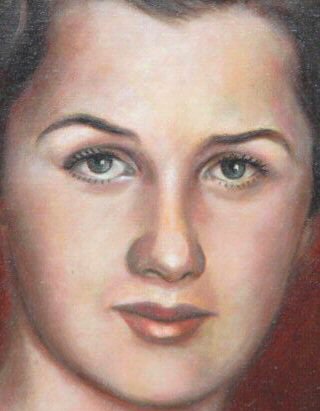THE PALETTE

|
Here's my set-up. I use a sheet of glass for my palette. If the
tabletop were not gray I would have a piece of gray mat board under the glass. The
colors are laid out with
the warm hues on the left and the cool colors on the right. The amount of paint is about the
equivalent of a wad of bubble gum except for white. You can also see in this picture a hand mirror
(for double-checking how the painting looks), my plastic carrier, a
container for turpentine, brushes, a palette knife, and a tube and bottle of painting medium.

Here I am loading my brush with paint from the palette. |
10 Basic Flesh Tones & How To Mix Them

|
Light Tones
|
|
|
|
|
|
Mid Tones
|
|
 Olive Olive
4 parts white, 1 part yellow ochre, ½ part viridian, and a touch of cadmium red. |
|
Dark Tones
|
|
|
|
Neutral Tones
|
|
|
|
|
  |
 Light Golden
Light Golden Light Flesh
Light Flesh Light Pink
Light Pink Tawny
Tawny Brown
Brown
 Dark Brown
Dark Brown
 Light
A lot of white to which you add just 3 touches of yellow ochre and 1 touch of black.
Light
A lot of white to which you add just 3 touches of yellow ochre and 1 touch of black. Mid
Mid
 Dark
Dark